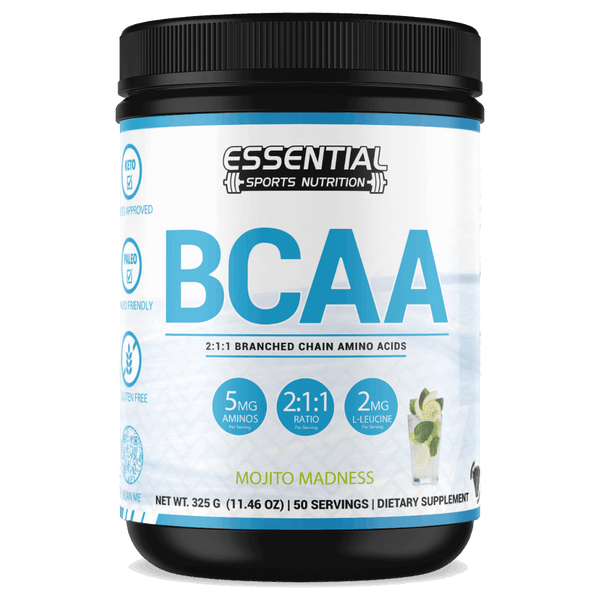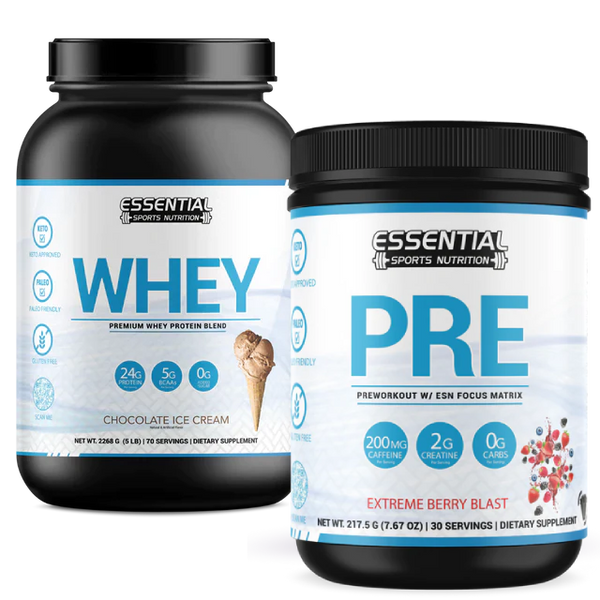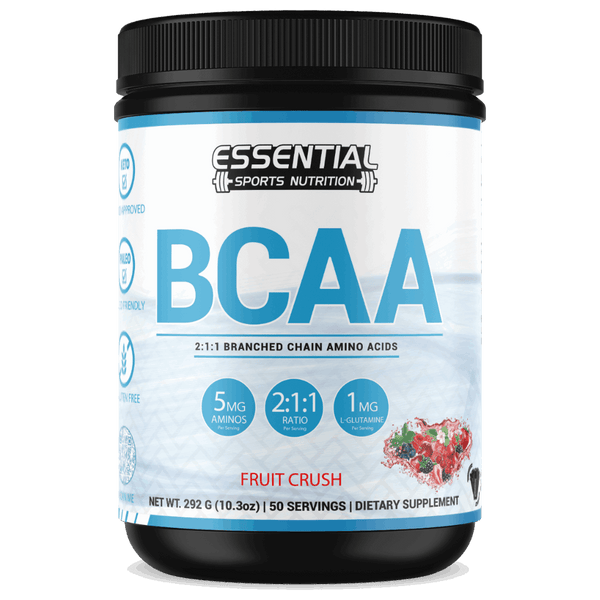Kettlebell Deadlift Variations: Proper Form and Common Mistakes
Mastering the kettlebell deadlift form goes beyond lifting weights. It's key to avoid injuries while boosting your gains. With the various kettlebell deadlift form variations out there, knowing the right way and common errors can change how you train. This guide will highlight the top techniques and the frequent common kettlebell deadlift mistakes.
If you're starting and want to get the proper kettlebell deadlift technique down, or if you're experienced and aim to improve, this piece has what you need. Your deadlifts will become safer and more effective through this knowledge.

Key Takeaways
- Learn to identify and fix kettlebell deadlift form variations mistakes.
- Understand why the best kettlebell deadlift form matters for progress and safety.
- Know the common kettlebell deadlift mistakes and how to steer clear of them.
- Get tips on performing the proper kettlebell deadlift technique for better strength and power.
- Better your workouts by using the right form and mechanics.
The Benefits of Kettlebell Deadlifts
Finding the power of kettlebell deadlifts is like opening a fitness treasure chest. These lifts are key for building strong muscles and using many muscle groups. They make your kettlebell routine more dynamic. Doing different kettlebell deadlifts builds strength and also boosts athleticism and posture.
Why Kettlebell Deadlifts Are Essential for Strength Training
Using kettlebell deadlifts in your training changes everything. They work on your core, strengthen your back, and build your lower body. This creates a strong body over time. Deadlifts with kettlebells increase your strength and resilience if done right.
Activating Muscle Groups with the Kettlebell Deadlift
The kettlebell deadlift engages many muscles at once. In each lift, the main and supporting muscles work together. It's a complete body exercise that targets your back, legs, and core.
It involves your glutes, hamstrings, and back muscles. It also works your core, shoulders, and grip. This provides a total workout.
| Muscle Group | Primary Role in Deadlift | Benefit from Kettlebell Deadlifts |
|---|---|---|
| Erector Spinae | Stabilizes the spine | Improved posture and spinal support |
| Hamstrings & Glutes | Drives the lifting motion | Enhanced power and acceleration in the lower body |
| Quadriceps | Extension of the knee joint | Strengthens legs for a balanced physique |
| Core Muscles | Braces torso | Stronger, more defined core |
| Forearms and Grip | Secures the kettlebell | Increased grip strength for daily activities |
If you want to improve your fitness or meet strength goals, kettlebell deadlift variations are key. They're crucial for any solid training plan. Start using the full range of kettlebell deadlifts and see big changes in your workouts.
Understanding Proper Kettlebell Deadlift Technique
Starting your journey with the kettlebell deadlift is rewarding. It uses a basic move called the hip hinge. This move is key for daily tasks and sports, showing why correct form is vital for safety and effectiveness.
The success of a kettlebell deadlift lies in both the physical lift and the right technique. Stand with your feet apart, and place the kettlebell between them. Hold the kettlebell handle tightly with both hands. Ready yourself to lift by tightening your core and keeping your back straight.
Getting the hip hinge right is essential. It means bending at the hips, not the waist. This ensures you work the right muscles safely. Push through your heels to lift, moving your hips forward, and stand up straight smoothly. This helps prevent injuries and benefits your lift.
The key is in the technique, not just the weight you can lift. The kettlebell deadlift proves that method and accuracy create an amazing movement.
Tips for the Best Kettlebell Deadlift Form
The kettlebell deadlift is key for great strength training. It improves your power and balance, and helps avoid injuries. Let's look at how to properly hold and control your body during the lift.
Optimizing Your Grip and Stance
Start by placing your hands shoulder-width apart to grip the kettlebell right. Your stance should let you hold the weight without hurting your back. The lift's power comes from your legs and hips, not arms. So, keep your feet hip-width apart on the floor. The right way you stand and hold the weight affects your lift’s strength.
Then, make sure the kettlebell is right in line with your feet's middle. This way, you lift without extra back strain. Bend with a straight back and tense your core before lifting.
Maintaining Core Stability Throughout the Movement
Having a solid core is crucial for a good kettlebell deadlift. Engaging your core helps lift and lower the weight smoothly. Start by taking a deep breath and pulling your navel towards your spine.
Keep the kettlebell close to your body as you lift to stay balanced. The lift is a slow hinge motion. Don't rush it. Lower the weight with a tight core, mirroring your lifting form.
| Key Aspect | Importance | Tips |
|---|---|---|
| Grip Technique | Ensures a secure hold and prevents slipping | Grasp the handle firmly with both hands, shoulder-width apart |
| Stance Foundation | Provides stability and power during the lift | Feet hip-width apart with weight in the middle of your feet |
| Core Engagement | Protects your lower back and enhances lift efficiency | Activate your core by drawing the belly button toward the spine |
By following these tips, you'll improve your kettlebell deadlifts. You'll see your strength and stability grow with each lift. Remember, your form is more important than how much you lift. Focus on technique to boost your workouts and reach your fitness goals confidently.
Kettlebell Deadlift Form Variations Mistakes
Getting the kettlebell deadlift right comes down to attention to detail. Even experienced athletes can make small but significant errors. To boost your strength training and cut injury risks, it's key to refine your technique in common moves like the kettlebell squat and deadlift.
Identifying and Avoiding Common Errors
One common mistake in kettlebell training is not doing the deadlift from the floor correctly. This starts with a bad setup: feet not shoulder-width apart, leading to an unstable base. Then, it's crucial to lift the kettlebell without harming your back, by bending your hips and knees, and keeping the weight close for a safer lift and better grip.
Bad habits like rounding your back can greatly lessen the effectiveness of your lift and its benefits.
Mitigating Injury Risks with Proper Form Adjustments
Improving your deadlift form means knowing the difference between a squat and a deadlift. In a deadlift, start with your hips higher than in a squat, and keep your spine straight as you bend at the hips. Mastering this not only involves how you lower the kettlebell but also using the lift to build strength. This includes paying attention to how your body handles the weight, ensuring you control the movement throughout.
By consistently practicing these adjustments, you'll avoid common kettlebell deadlift mistakes and develop a stronger, more resilient body. Remember, the real skill in lifting isn't just lifting heavy weights, but in applying perfect form and technique for significant results.
| Common Mistake | Consequence | Adjustment |
|---|---|---|
| Rounded back | Potential back injury | Keep spine neutral, chest up |
| Kettlebell too far from the feet | Increased strain on back and shoulders | Position the kettlebell between the feet |
| Improper hip hinge | Incorrect muscle activation | Practice hip hinge without weight |
| Confusing squat with deadlift | Inefficient movement, reduced focus on the posterior chain | Higher hip positioning and focus on hip drive |
Improving Your Kettlebell Deadlift Form
Want to boost your deadlift training? Perfecting your kettlebell deadlift form not only boosts performance but also cuts injury risk. This lets you make the most of your training efforts.
Drills and Techniques for Form Enhancement
Improving your form starts with specific drills and techniques. Practicing the hip hinge refines vital deadlift mechanics. Focusing on slow descents where you reset at the bottom teaches your body to keep good form.
Incorporating Mobility Work into Deadlift Training
Adding mobility work to training is crucial for a good deadlift. It boosts your range of motion, especially in hips and ankles, which is key for a proper kettlebell deadlift. Doing dynamic stretches before and static holds after your workout helps a lot. This focus on mobility translates directly to better form.
Here's a handy table to start with targeted drills and mobility exercises:
| Drill/Technique | Purpose | How Often |
|---|---|---|
| Hip Hinge with Dowel | Teaches proper back alignment | Daily |
| Kettlebell Deadlifts (Paused Reps) | Strengthens form at the start | During warm-up sets |
| Ankle Mobility Exercises | Increases range of motion for squatting movements | Before workouts |
| Static Hip Flexor Stretch | Improves hip extension | Post-workout |
| Hamstring Loaded Stretches | Enhances flexibility for better hinge | 2-3 times per week |
With regular practice of these drills and steady mobility work, you'll see your kettlebell deadlift form improve. Keep at it, and your strength and technique will skyrocket!
Common Kettlebell Deadlift Errors to Avoid
Mastering the kettlebell deadlift isn't easy. Avoiding mistakes is key to good training. Knowing common errors helps you correct them for better workouts.
Navigating Challenges in Kettlebell Deadlift Execution
A big error is lifting with the back, not legs and hips. This can cause injury. Always lift from your lower body with a straight back to use the right muscles.
Getting the most out of your workouts means being smart and careful. It's key to avoid kettlebell deadlift mistakes for better performance and to stay away from injuries. Here, we'll look at some important but often missed points.
Differentiating Between Deadlift Styles to Improve Performance
Knowing the different deadlift styles is crucial. Each style works various muscles and needs different skills. The classic deadlift focuses on your back muscles. However, sumo deadlifts, with a wider stance, might fit better if you have certain hip needs. Learning the differences can help customize your training to suit your body.
Addressing Misconceptions in Deadlift Execution
Many errors in deadlift execution come from wrong ideas about the move. People often forget about using their hips, overusing their lower back instead. This lessens the workout's effect and ups injury risk. Right form means using your whole body, including your core and legs. This makes your lift safer and more worthwhile.
- Start the lift by bending your hips, not your waist.
- Keep the kettlebell close to you for better balance.
- Make sure your back stays flat during the whole lift for the right posture.
Fixing these common errors can really improve your kettlebell deadlift. It lets you unlock the full power of this amazing exercise.
How to Correct Persistent Deadlift Technique Flaws
Another mistake is a bad kettlebell grip. A strong grip keeps you in control and safe. Hold the kettlebell right to protect your joints. Keeping your core tight helps you lift better and safer.
- Start with the kettlebell between your feet, set slightly in front.
- Your feet should be shoulder-width apart for stability.
- Bend at the hips and knees, sending the hips back while maintaining a flat back.
- Grip the handle firmly, keeping your shin vertical or with a slight angle.
- Drive through the heels and extend your hips and knees to stand up tall.
- At the top of the movement, squeeze your glutes and engage your core.
- Return to the starting position by hinging at the hips and controlling the descent.
Following these steps will improve your deadlift technique. It boosts performance and safety in your training.
Mastering the Kettlebell Deadlift
To improve your kettlebell deadlift, try advanced variations and build on the basics. It takes consistency in practice to elevate deadlift performance. These moves can boost your strength, endurance, or power, making your workout more effective.
Advanced Variations for Experienced Lifters
If you're good at the basic kettlebell deadlift and want more challenge, try advanced variations. Adding moves like the banded kettlebell deadlift or doing it with a deficit makes it harder. This helps fine-tune your technique and boosts your strength.
Elevating Your Deadlift Through Consistent Practice
Getting better comes from practicing regularly. Consistency in practice means focusing on improving each time. Every practice is a chance to get better and elevate your deadlift performance step by step.
Kettlebell Deadlift Variations for Enhanced Performance
Adding different kettlebell deadlifts to your workout can improve your strength training. These variations work various muscles and stabilizers. This helps unlock new growth and better performance.
Kettlebell Sumo Deadlift
The kettlebell sumo deadlift uses a wider stance. It works your inner thighs and glutes more. Your feet should be wider than your hips, holding the kettlebell between them.
Single-leg Kettlebell Romanian Deadlift
This version improves balance and strength on one side. You lift one leg, hinge at the hips, and focus on the working side's hamstrings and lower back. It boosts muscle symmetry and coordination.
Kettlebell Suitcase Deadlift
The suitcase deadlift looks like lifting luggage. It focuses on your obliques and lower back. The weight is off-center, challenging your core and offering a unique strength test.
These kettlebell deadlift variations can push your performance higher. They keep your workouts fresh and encourage progression. With regular practice, your lifting and balancing skills will soar.
Progressing with Kettlebell Deadlift Variations
When you get deeper into strength training, using different kettlebell deadlift moves is key. It proves you're growing by handling heavier weights and more difficult techniques. This is how you show your commitment to always getting better.
Transitioning to Heavier Weights and Complex Moves
Choosing a heavier kettlebell isn't just to show off. It's a way to really push your muscles to new heights. But, you've got to be responsible. Staying safe means keeping the right form and moving up slowly. This helps you get stronger without getting hurt.
Adding tricky moves, like the clean and press or the Turkish get-up, is great for your strength and how well you move. They make your workout much more powerful.
Benefits of Incorporating Single-leg and Sumo Variations
Adding single-leg and sumo kettlebell deadlifts changes your workout in cool ways. These types help keep your muscles balanced and your core strong. Let's look at what each of these can do for you:
| Exercise Variation | Main Benefits | Targeted Muscle Groups |
|---|---|---|
| Single-leg Kettlebell Deadlift | Improves balance, focuses on individual leg strength, activates the core | Hamstrings, Glutes, Core |
| Kettlebell Sumo Deadlift | Increases leg strength, especially inside the thighs, makes your grip stronger | Quadriceps, Glutes, Adductors, Forearms |
By doing these moves often, you will see a big difference in your strength and stability. It's important to always pay attention to what your body is telling you. That way, you improve while also avoiding any injuries.
Enhancing Athletic Performance Through Kettlebell Training
Kettlebell deadlifts are a game-changer for athletes looking for better performance. They work the posterior chain muscles, crucial for explosive sports actions. Let's dive into how kettlebell helps boost your sports performance:
| Muscle Group | Benefits | Deadlift Variation |
|---|---|---|
| Hamstrings and Glutes | Improves sprinting speed and jumping power | Kettlebell Swing Deadlift |
| Lower Back | Enhances core strength and stability | Kettlebell Sumo Deadlift |
| Core Musculature | Aids in balance and coordination | Kettlebell Suitcase Deadlift |
| Grip Strength | Bolsters forearms and improves overall lifting capacity | Single-arm Kettlebell Deadlift |
Sticking to kettlebell deadlift basics and using them in your training boosts your athletic skills. It’s more than just exercise. It’s about gaining strength, precision, and performance. Remember, being consistent and using the right techniques will unlock your full potential with kettlebell training.
Conclusion

Kettlebell deadlifts can be a key exercise for getting strength training. We've explored the various types of deadlifts and why mastering them is vital. Learning to avoid common mistakes is also important to keep your training safe and effective.
In this section, we highlighted the main points from our deep dive. We talked about how to do deadlifts properly and the special exercises that improve your skills. By keeping away from common errors, you keep making progress and avoid getting hurt. We hope you see how valuable kettlebell deadlifts are for your strength workouts.
Think of kettlebell deadlifts as more than just an exercise. They're essential for gaining serious strength and improving your athletic skills. With ongoing effort and careful practice, mastering this tool is within your reach. Keep lifting smartly, pay attention to your form, and enjoy the amazing benefits of kettlebell exercises.
Common Mistakes with Kettlebell Deadlifts FAQs
Q: What are the benefits of kettlebell deadlift variations?
A: Kettlebell deadlift variations can help improve strength, power, and cardiovascular endurance. They also target multiple muscle groups, such as the hamstrings, glutes, and lower back, for a comprehensive workout.
Q: How is a kettlebell deadlift different from a standard barbell deadlift?
A: A kettlebell deadlift involves using a kettlebell instead of a barbell. The movement and muscle engagement are similar, but the kettlebell adds an element of instability, requiring greater core activation for balance.
Q: What are common mistakes to avoid when performing kettlebell deadlifts?
A: Common mistakes include rounding the back, lifting with the arms instead of the legs, and not engaging the core muscles. It's important to maintain proper form and technique to prevent injury.
Q: How can I perform a kettlebell sumo deadlift?
A: To perform a kettlebell sumo deadlift, stand with your feet wider than hip-width apart, toes slightly turned out. Grab the kettlebell with both hands between your legs and lift by driving through the heels and extending the hips.
Q: What muscles are targeted during a kettlebell suitcase deadlift?
A: The kettlebell suitcase deadlift primarily targets the hamstrings, glutes, and lower back. It also engages the core muscles to stabilize the body during the movement.
Q: Can kettlebell deadlifts help improve my conventional deadlift technique?
A: Yes, incorporating kettlebell deadlift variations into your training can help strengthen the muscles used in the conventional deadlift, improving overall technique and performance.
Q: Is it necessary to use different kettlebell deadlift form variations in my workout routine?
A: Using different kettlebell deadlift variations can help prevent plateauing and enhance muscle development by targeting muscles from different angles. It's beneficial to incorporate variations for a well-rounded workout.























